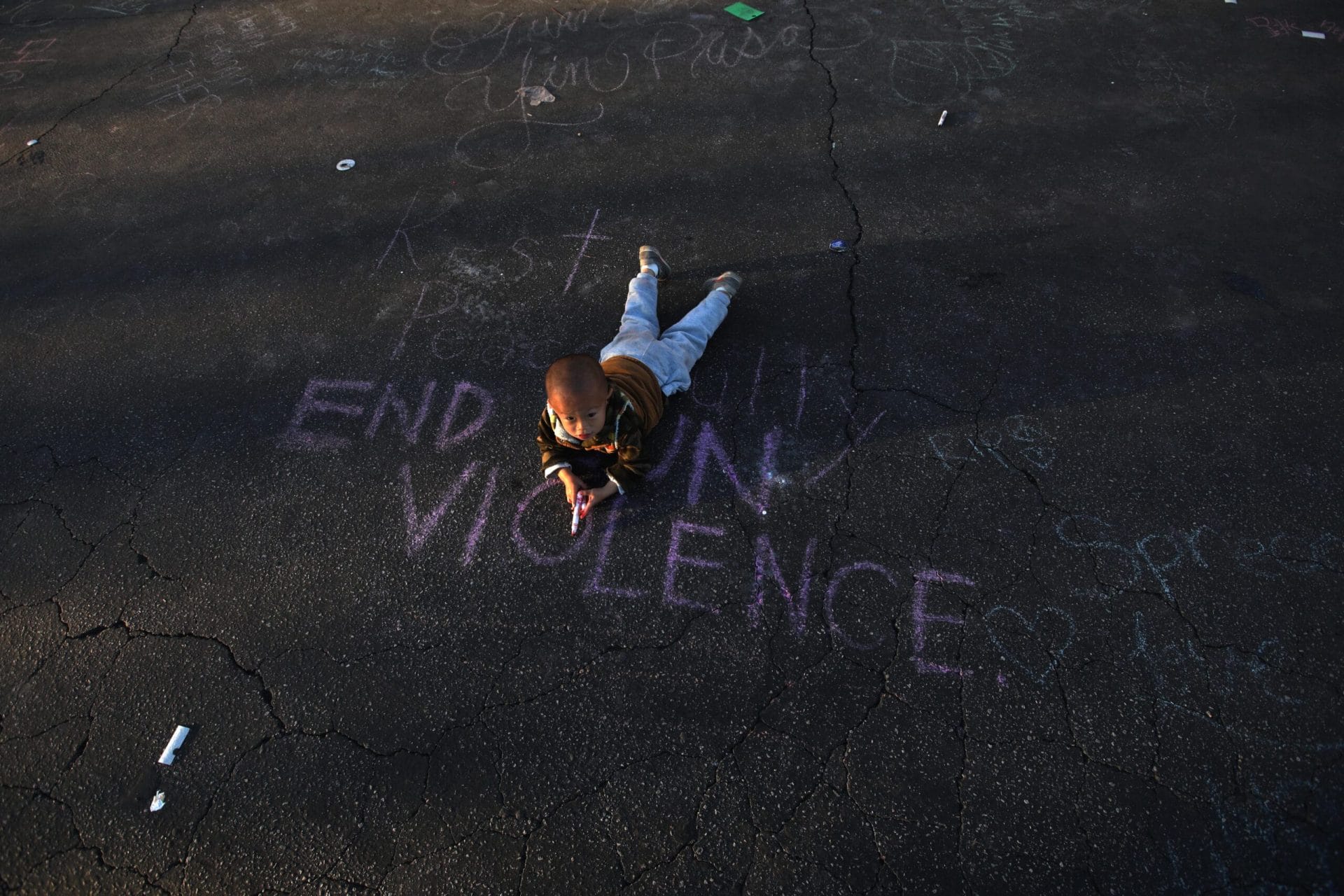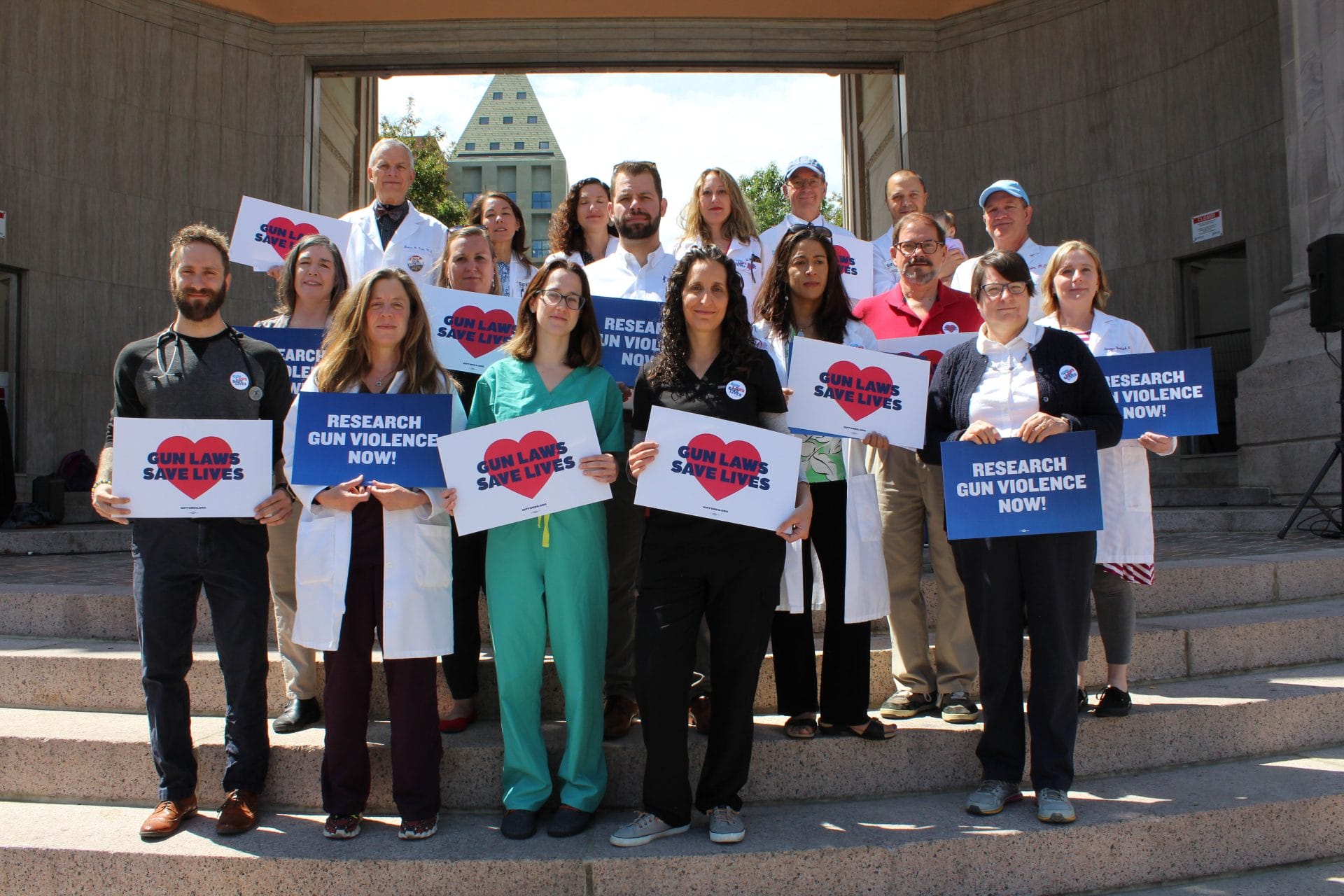
Gun Deaths in the US Remain at Near-Record Highs
The CDC recently released its final data on gun deaths for 2022, showing a modest sign of progress.
The national gun death rate fell 3% from 2021 to 2022, resulting in 626 fewer lives lost. This decrease comes on the heels of several years of rising gun violence: Gun deaths increased 15% from 2014 to 2019, then surged another 24% between 2019 and 2021.
Although this decline is important, this data in no way indicates that our nation’s gun violence crisis is over. In fact, the US still experienced the second-highest number of gun deaths on record in 2022—outpaced only by the number of deaths in 2021. And gun suicides reached their highest level on record. In total, 48,204 Americans lost their lives to this epidemic in 2022. And this data also reveals a number of other troubling trends:
- Someone died from gun violence every 11 minutes in 2022.
- Gun violence continued to be the leading cause of death for American children ages one to 17 for the third year in a row. One out of every 15 children who died in 2022 was killed by a gun.
- Since 2000, the number of gun suicides has risen 63%—from 16,586 to 27,032—reaching record-high levels in 2022.
- Black Americans are 13 times more likely to be killed in gun homicides than white Americans; Black children are 18 times more likely to be killed in gun homicides than white children.
- Gun deaths increased 16% for American Indians and Alaska Natives, while falling or remaining stable for all other racial and ethnic groups.
Although it is released with a significant lag—coming more than a year after the end of 2022—the CDC’s mortality data, which is based on death certificates, is the most complete and accurate source for information on gun deaths in America. Importantly, however, this data merely provides insight into what has changed about gun violence in America—not why it changed.
Researchers have speculated that gun homicides soared during the pandemic due to the social upheavals of the COVID-19 pandemic and the abrupt fractures in police-community trust that followed the deaths of George Floyd and countless others at the hands of police. Some of these declines in gun homicides may merely be attributable to the waning of the pandemic and the passing of time since the civil unrest in 2020.
Nevertheless, understanding the changing dynamics of gun violence—and how they intersect with geographic and demographic characteristics—is a critical first step in identifying solutions to this crisis.
MEDIA REQUESTS
Our experts can speak to the full spectrum of gun violence prevention issues. Have a question? Email us at media@giffords.org.
Contact
The decrease in overall gun deaths was primarily driven by a decrease in gun homicides, which fell 7% from 2021 to 2022. However, the gun homicide rate in 2022 is still 70% higher than in 2013, just one decade earlier. Overall, 19,651 people were killed in gun homicides in 2022.
Guns drive our nation’s homicide crisis—more so now than ever before.
- Guns were used in 79% of 2022 homicides—up from 74% five years earlier and 70% 10 years earlier.
- Since 2014, the number of gun homicides has increased 79%; non-firearm homicides rose just 7% over this same time period.
This decline in gun homicides was not uniform across all states.
- While 34 states and Washington DC saw decreases in their gun homicide rates from 2021 to 2022, 16 states saw increases in gun homicides, in some cases by more than 30%.
- All but five states—Alaska, New Hampshire, Oklahoma, Utah, and Wyoming—had more homicides in 2022 than in 2019, before the nationwide surge in gun homicides. At least 10 states saw a more than 50% increase in gun homicides over this period.
Furthermore, decreases in gun violence were not spread equally across races and genders.
- Gun homicide rate rose 23% for American Indian and Alaska Native people and 2% for people of more than one race. Conversely, gun homicides fell by 10% for Black people, 8% for white people, 6% for Asian-Americans, and 3% for Native Hawaiians and other Pacific Islanders.
- The gun homicide rate among Hispanics did not change from 2021 to 2022.The gun death rate declined twice as much for men as it did for women—an 8% versus 4% decline.
While gun deaths overall fell in 2022, the number of gun suicides continued to rise. In 2022, gun suicide claimed the lives of 27,032 Americans. This number represents the highest number of gun suicides on record—outpacing the previous record set the prior year. Overall, the number of gun suicides rose by 704 deaths.
Importantly, this rise in gun suicide was not felt equally across all groups of people or geographies.
- Half the states saw increases in their gun suicide rate, while the other half saw decreases. Nebraska experienced the largest gun suicide rate increase (24%); Rhode Island saw the largest decrease (42%).
- Most racial and ethnic groups experienced an increase in gun suicide rates from 2021 to 2022. American Indians and Alaska Natives saw the largest increase (8%), followed by people of more than one race (4%), Black people (2%), Asian Americans (1%), Hispanics (1%), and white people (0.4%). Gun suicide rates fell 11% for Native Hawaiians and other Pacific Islanders.
- The increase in gun suicides was slightly larger among men than women (2% versus 0.6%).
- Guns are increasingly being used in suicide deaths—particularly for people of color. In 2018, guns were used in 49% of suicides among Black people and 32% of suicides among American Indians and Alaska Natives. In 2022, these numbers rose to 58% and 39% of suicides among these groups, respectively.
Youth suicides fell overall in 2022—but continued to rise for young people of color.
- Gun suicide rates for people ages 10 to 19 fell 12% from 2021 to 2022, but remained 4% higher than in 2019.
- Gun suicide rates fell 20% for Hispanic children and teens and 16% for white children and teens, but increased for both American Indian and Alaska Native children and teens and Black children and teens—by 33% and 16%, respectively.
- As a result of increasing youth suicide rates, for the first time on record, the gun suicide rate among Black children and teens surpassed the rate among white children and teens.
- Firearms are increasingly used by children and teens in suicides, a trend largely driven by increased use of firearms in suicides among youth of color. In 2018, Black children and teens used guns in 44% of suicides; by 2022, this percentage rose to 57%. American Indian and Alaska Native children and teens similarly saw this percentage increase from 20% to 42% over the same time period. The proportion for white children and teens remained relatively stable (48% in 2018 versus 50% in 2022).
In 2022, 463 people were killed in unintentional shootings, down from 549 deaths in 2021. In fact, 2022 saw the lowest number of unintentional gun deaths since 2018, and the unintentional gun death rate is 39% percent lower in 2022 than 20 years earlier in 2003.
Children continue to be disproportionately impacted by unintentional gun violence.
- Over 25% of unintentional gun deaths are of children under 18. Studies show that the vast majority of these deaths involve children accessing improperly stored firearms in their homes or the homes of trusted adults.
- Although the number of unintentional child gun deaths fell from 2021 to 2022, 2022 still saw more unintentional gun deaths than 2019.
- Children of color see an even more disparate impact of unintentional gun violence compared to white children: 62% of unintentional shooting deaths among children in 2022 involved children of color.
The new CDC data shows that law enforcement shot and killed 643 people in 2022—a 20% increase from 2021.
However, the CDC’s accounting of police shootings has been shown to be unreliable and incomplete due to undercounting and misclassification. Therefore, using CDC data to understand fatal police shootings and other police violence distorts the complete picture of this problem.
Mapping Police Violence, an independent organization that tracks incidents of fatal police violence across the country, found that law enforcement shot and killed 1,159 people in 2022, nearly double the CDC’s number. In the overwhelming majority of these deaths—97%—people killed by police were killed with guns.
The indications of improvement in our nation’s gun violence epidemic are important, but this nation is still at a crisis point. Gun deaths remain at near record-high levels: While the national gun death rate fell 3%, this is only a small decline from the record-high number of gun deaths seen in 2021. 2022 now has the second-highest number of gun deaths on record, and tens of thousands of lives were impacted by gun violence in just this single year.
And while overall gun deaths fell, gun suicides continued to rise. In fact, in eight of the last 10 years, including in 2022, our country has set a new record number of gun suicides. Too often, gun suicide is the untold story of gun violence in America, yet its pernicious effects impact far too many American families.
These numbers—and the lives they represent—demand urgent action. It’s long past time our leaders address gun violence as the public health crisis it is and enact lifesaving, comprehensive solutions.
GET THE FACTS
Gun violence is a complex problem, and while there’s no one-size-fits-all solution, we must act. Our reports bring you the latest cutting-edge research and analysis about strategies to end our country’s gun violence crisis at every level.
Learn More

SPOTLIGHT
GUN LAW SCORECARD
Every year, the data is clear: States with strong gun laws have less gun violence. See how your state compares in our annual ranking.
Read More
